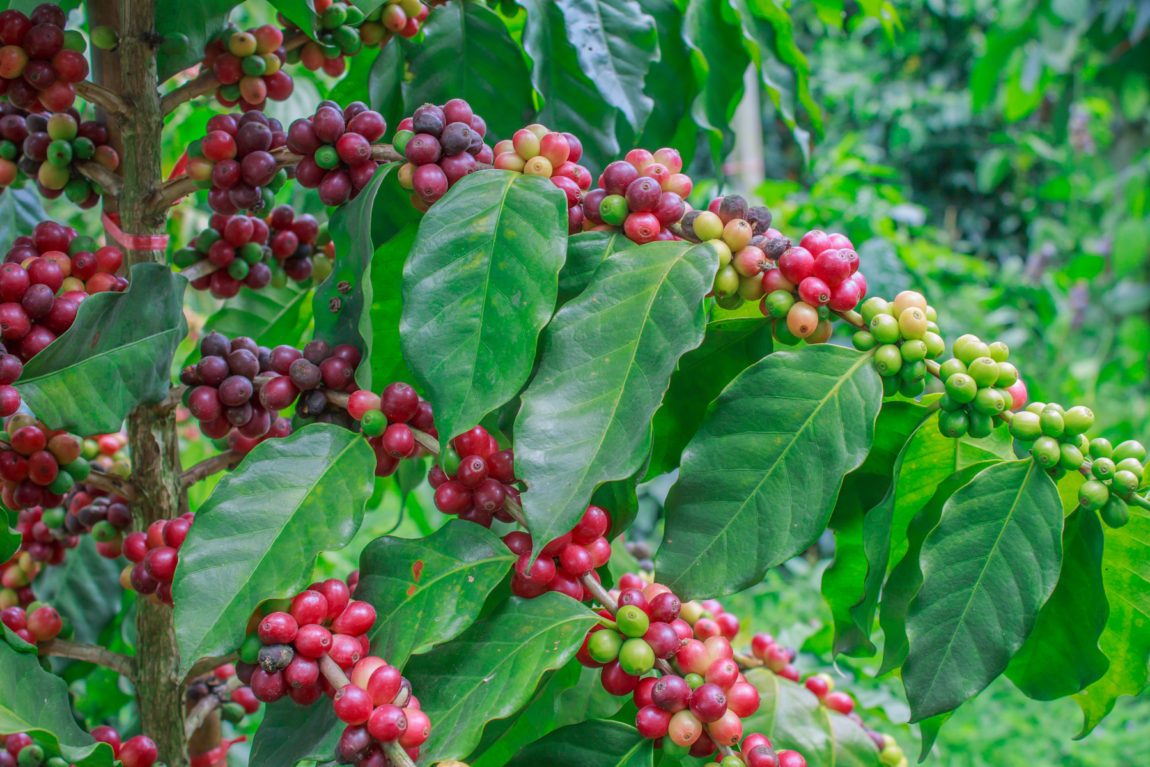Different Coffee Species
Have you noticed the bags of coffee that seem to brag that they are 100% Arabica? What exactly does that mean and is it significant?
Arabica is a species of coffee plant. In fact, the coffee that we drink is primarily Arabica. However, Arabica is not alone. There are over 100 unique, different coffee species!
Coffee trees belong to the botanical family Rubiaceae, which is one of the largest families in the plant kingdom. The Rubiaceae family contains over 6,500 different species.
All coffee species are woody evergreens. However, different species vary greatly in size. Some coffee plants are small shrubs while others are large trees that can grow up to 30 feet in height.
Coffee plants produce white flowers and fruit, called coffee cherries. Coffee cherries contain seeds, which are the coffee beans we all know and love.
Let’s briefly discuss the different coffee species…
Arabica (Coffea arabica)
Arabica is what we typically think of when we think of coffee. This species makes up about 75% of total world coffee production. Arabica is the primary species of coffee grown in East Africa, Central America, and Southern America. It grows best in the shade, at higher elevations, and where temperatures average 60-75 degrees F. Arabica is a self-pollinating plant so the seedlings are typically very similar to their parents genetically. This feature allows for consistent plant characteristics and taste.
Within the species Coffea arabica there are numerous different varietals or cultivars. There are very strong similarities to wine here. Wineries use different varietals of grape to make different wines (Pinot Noir, Merlot, etc.) Similarly, coffee farmers and roasters use different varietals of the Arabica coffee plant to make different coffees. Common Arabica varietals include names like Typica, Bourbon, Caturra, and Geisha.
Robusta (Coffea canephora)
Robusta is the second most commonly produced and consumed coffee in the world. This coffee species typically grows in West Africa and Southeast Asia.
Robusta lives up to its name and is a robust coffee species. It is easier to grow, more resistant to disease and pests, and tolerates poor soil and marginal growing conditions. Because of these characteristics Robusta can grow in conditions that would limit Arabica coffee growth. Optimal growing conditions for Robusta are different and include lower elevation, higher temperatures (75-85 degrees F), and higher rainfall. While its heartiness allows Robusta to survive in suboptimal condition, this is also it’s curse when it comes to commercial use. This characteristic has made it the coffee of choice in areas that probably shouldn’t be growing coffee at all, resulting in some seriously poor quality Robusta coffees.
Robusta coffee beans have some significant differences in chemical composition compared to Arabica beans. Robusta contains almost double the amount of caffeine. This may sound like a good thing for those mornings where you really need a pick-me-up. However, caffeine has a bitter taste. Robusta also has about half of the sugar content and less lipid content compared to Arabica. Both sugar and lipid help to balance and offset the bitterness of caffeine. Thus, Robusta typically tastes harsh, bitter, and has unique flavors that taste to me like burnt peanuts and rubber.
Due to the harsh, often bitter taste Robusta is often processed into instant coffee. However, a specialty, single origin Robusta coffee roasted correctly can be enjoyable. It’s not easy to find one though! If nothing else, it is a unique and interesting taste. I recommend trying it if you ever get the chance.
Liberica (Coffea liberica)
Liberica (Coffea liberica) is a coffee species that originated in western and central Africa and currently is a major crop in the Philippines. This coffee species grows best in jungle environments and grows to 20-30 feet tall. Coffee beans of Liberica coffee have a unique almond shape and are large. Liberica coffee has a distinct floral and fruity flavor and can taste woody and jungle-y.
The Liberica coffee plant is currently endangered. This coffee is difficult to find commercially. However, this wasn’t always the case.
The history of Liberica coffee is fascinating. In the 1890s a disease called coffee rust destroyed over 90% of Arabica coffee worldwide. The Philippines planted Liberica to replace the Arabica lost to the coffee rust. At this time in history the Philippines was a territory of the United States. The Philippines became a major supplier to the coffee industry in America. Many of the original US coffee brands and blends contained a large quantity of Philippine Liberica. The good times for Liberica came to an end when the Philippines gained independence and America ended the importation of key crops that included sugar, rice, and coffee. With it’s key market gone and the strong commercial preference for Arabica coffee, Liberica coffee languished and has never regained the prominence that it once had.
Excelsa
Last but not least, we come to the Pluto of the Coffee world. You are still a planet in my book Pluto!
The final commercially used coffee species may not be a separate species at all. Coffee experts originally considered Excelsa coffee a unique species. However, they have recently reclassified Excelsa as a variety of Liberica coffee. This species or subspecies of coffee produces large trees that grow in medium altitudes and are typically found in Southeast Asia.
Excelsa coffee trees are hearty—tolerating dry areas and are resistant to many diseases. This coffee has a tart, fruity, unique and complex flavor. The fragrance and flavor of this coffee can be unique and while some people love it, many people do not find this to be their cup of tea, or coffee. Due to these characteristics, coffee producers typically us Excelsa coffee in blends.




No Comments